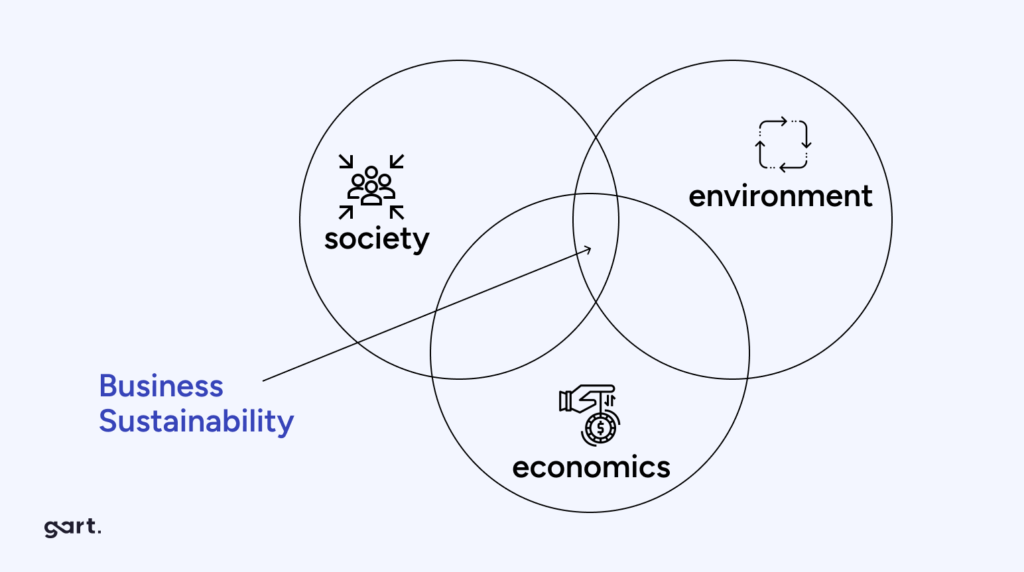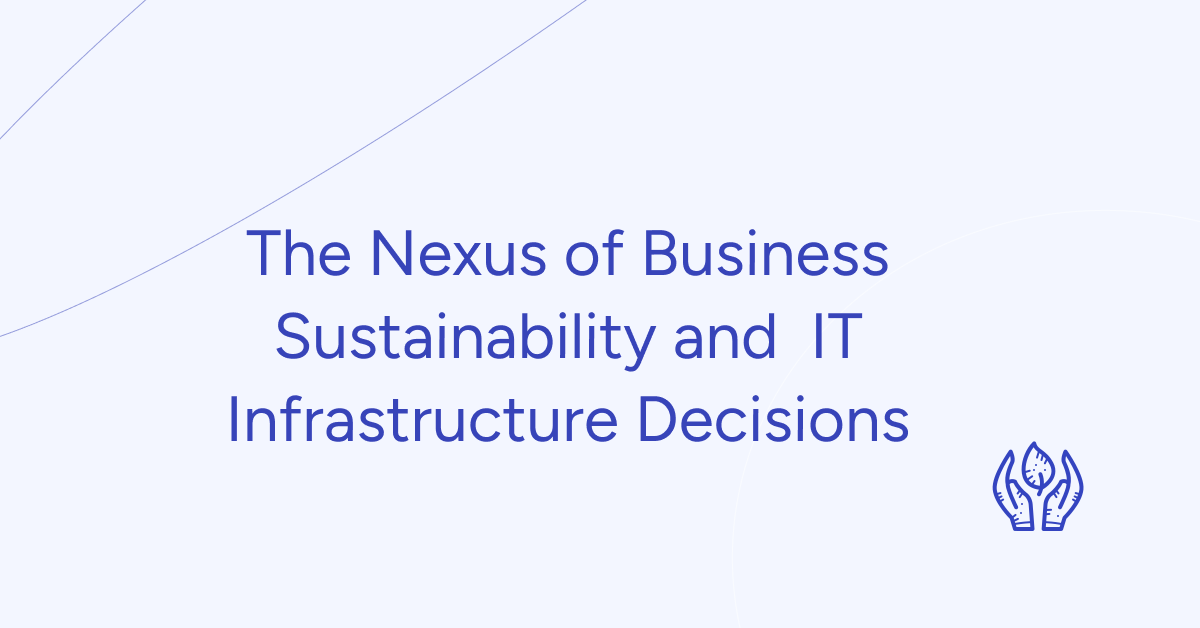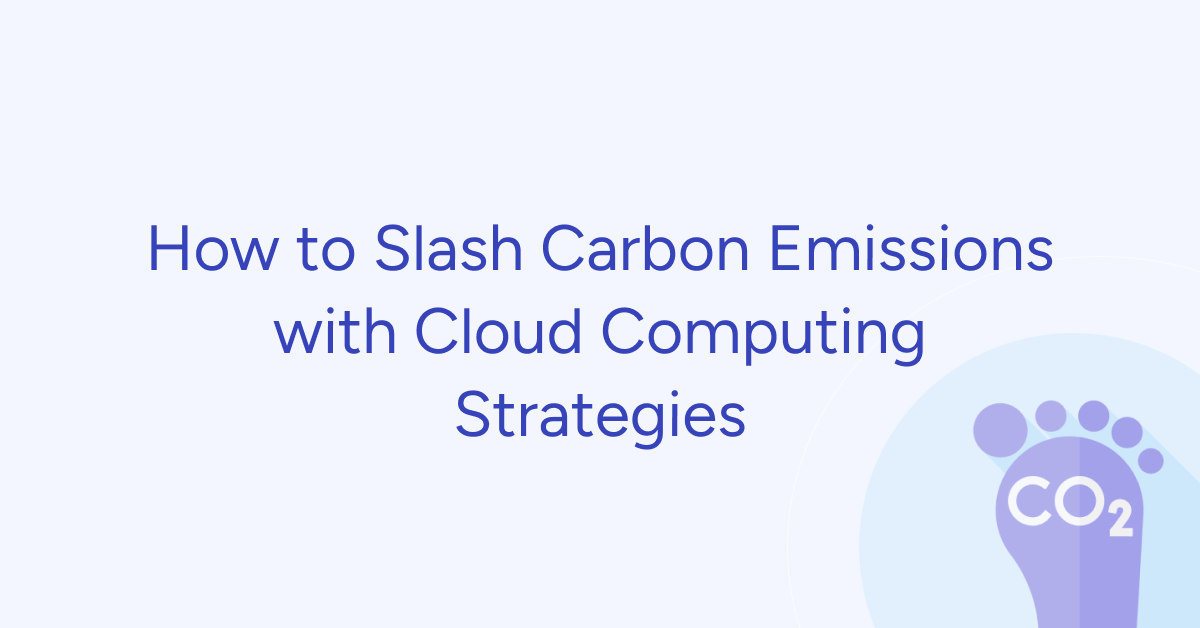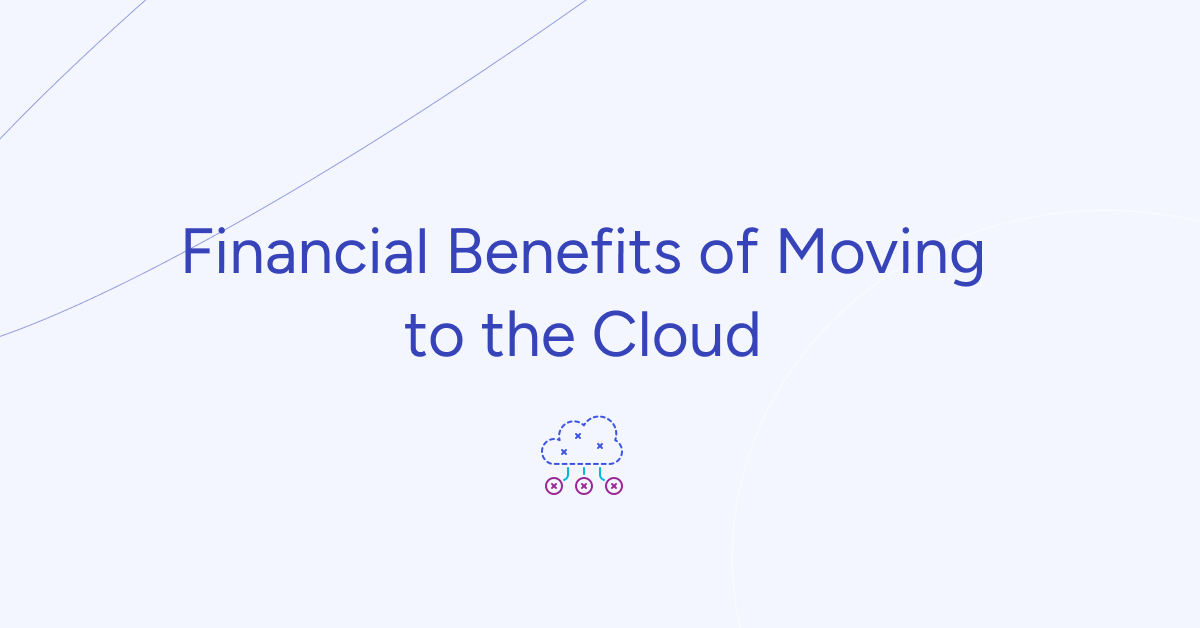The dividends of adhering to the principles of sustainability in business aren’t always immediate. But with all this progress, though, come new challenges: CO2 emissions are shooting up, countries are dealing with more wildfires and hurricanes thanks to climate change, and there are more climate refugees than ever – stuff that governments can’t handle alone without some serious action from companies.
Why does sustainability matter to your business?
Businesses fall into two categories: those that are conscious about their impact and those that aren’t quite there yet. The former strive to change their business models and supply chains to reduce their environmental and societal footprint. The latter, however, may ignore these challenges and operate solely based on short-term goals, with profit maximization as their primary focus.
Sometimes, instead of taking decisive action, companies engage in greenwashing. And some businesses simply don’t understand what they can and should do to consciously address the challenges of sustainable development and adapt.
This brings to mind a familiar scenario: the age-old question posed to a child, “Do you want one candy now, or two candies later?” Like the child who chooses “one candy now,” there are executives who prioritize profit now rather than a larger profit later. However, resources are finite, and by consuming the candy now, there won’t be any left for later. In the context of sustainable development, “later” might not be in 7 hours but in several years.
There exists the concept of an ESG strategy – investors’ focus on how companies manage their environmental, social, and governance risks. According to forecasts from Deutsche Bank, by 2030, all investors will pay attention to ESG, so companies need to prepare now. If your company is “lucky” enough not to have ESG-focused investors (yet), you may still be asked for certification or a sustainability report.
One more example.
A court in the Netherlands set a precedent by ordering Shell to reduce its CO2 emissions by 45% (absolute figures) by 2030 from the 2019 level. The lawsuit was filed by seven environmental organizations on behalf of 17,000 residents of the Netherlands.
Despite the company significantly outpacing its competitors in CO2 reduction efforts and adopting a climate strategy until 2050 in 2021, the court ruled that the analysis of materials provided by the company demonstrated a risk of non-compliance with its obligations. The company stated that it would appeal.
Why is this a precedent? It marks the first time a court has regulated a company’s CO2 reduction activities, but it may become a common standard in the future. Therefore, ambitious goals, innovation, and CO2 reduction are realities that companies need to consider.
How Gart can help your company achieve sustainable development
So, what’s sustainable development anyway? It’s basically about making sure we meet our needs now without leaving future generations high and dry. Think of it as setting up society’s activities in a way that keeps the party going for the long haul. We’re talking about fairness, greenery, and making sure we don’t run out of nature’s goodies.
Now, why are we talking about this on a site about DevOps, digital transformation, & SRE? Well, here’s the scoop: sustainable development isn’t just about hugging trees. It’s about balancing the economic, social, and environmental sides of life. And hey, ecology gets a chunk of the attention, but it’s not the whole story.

Alright, let’s talk about how DevOps fits into the sustainability game.
First off, how does your DevOps culture vibe with sustainability goals? Think about it. DevOps is all about collaboration, efficiency, and continuous improvement. These values totally align with the idea of sustainability – you know, doing things smarter, not harder, and always striving to make things better for the long haul.
How does your SRE squad chip in to keep your digital services and infrastructure eco-friendly? Like, do they optimize stuff to use less power or resources? Maybe they find ways to make things run smoother, which can save energy in the long run.
By automating repetitive tasks and streamlining processes, you’re cutting down on waste and resource consumption. Less manual labor means fewer energy resources burned up, which equals a smaller environmental footprint. It’s like hitting two birds with one stone – boosting efficiency while keeping Mother Earth happy.
Here’s a short list of tasks where DevOps, SRE, and cloud computing can make a business more sustainable:
- Automating deployment processes to reduce energy consumption and waste associated with manual deployment methods.
- Implementing infrastructure as code (IaC) practices to optimize resource usage and minimize unnecessary server provisioning.
- Utilizing containerization and microservices architecture to improve resource efficiency and scalability, reducing the need for over-provisioning.
- Leveraging cloud computing services for dynamic scaling and resource allocation, enabling businesses to use only the necessary computing power and storage at any given time.
- Implementing continuous monitoring and optimization practices to identify and address inefficiencies in resource usage, leading to reduced energy consumption and cost savings.
- Incorporating disaster recovery and failover mechanisms through cloud-based redundancy, minimizing the environmental impact of downtime events.
- Adopting serverless computing solutions to eliminate the need for managing physical infrastructure, reducing energy consumption and carbon footprint
- Implementing DevOps practices to streamline development cycles, reduce time-to-market, and optimize resource usage, contributing to overall sustainability efforts.
- Utilizing SRE methodologies to improve system reliability, minimize outages, and optimize resource utilization, leading to energy savings and reduced environmental impact.
- Implementing green data center initiatives, such as using renewable energy sources and optimizing cooling systems, to minimize the environmental footprint of data center operations.
So, yeah, DevOps and sustainability? They’re like peanut butter and jelly – a perfect match.

Insights from Experts: the integral role of sustainability in shaping business and IT infrastructure decisions
From Christophe Girardier, CEO and co-founder of Glimpact:
“When it comes to environmental development, only examining carbon emissions does not allow for the whole picture. Extreme weather events, upheaval of the daily lives of consumers and complex environmental regulations are just a few of the ways that climate change is already impacting businesses globally. But understanding true sustainability requires more than just addressing carbon emissions, leaders must understand the full picture to assess full risk and make informed decisions.
Transitioning away from the myopic ‘carbon footprint paradigm’ requires a radically different vision of the ecological crisis. The EU intends to impose its robust PEF/OEF approach as the only methodological framework to implement new regulations which are now coming into force for industrial players around the world. For U.S. companies who want to market their products to the EU, they must embrace these new standards rather than risk being ostracized by European consumers, or worse, having the onus of EU regulations bar them from the market entirely. As we look ahead to the coming year, smart C-suite executives that take the time to understand nuances associated with true sustainability are those that will be most prepared in this new era of global risk.”
From Jennifer Eden, CEO and Co-Founder, Tampon Tribe:
“I am reaching out regarding your call for entrepreneurs to discuss the pivotal role of sustainability in shaping business and IT infrastructure decisions. As the CEO and Co-Founder of Tampon Tribe, a brand at the forefront of integrating sustainability into every aspect of our operations, I am keen to share our journey and the strategic decisions we’ve made to uphold our commitment to the environment.
Sustainability is not just a facet of Tampon Tribe; it is the backbone of our business model and operational philosophy. This commitment influences our decisions from product development to packaging, marketing, and especially our IT infrastructure. We leverage cloud-based solutions to minimize our carbon footprint, employ data analytics for efficient resource management, and continuously seek out eco-friendly technologies that align with our sustainability goals.
Our approach has been to view sustainability as an investment rather than a cost, one that pays dividends not only in terms of environmental impact but also in customer loyalty and brand differentiation. Navigating the challenges of maintaining sustainable practices while ensuring operational efficiency has been a rewarding journey, offering valuable lessons on the integration of eco-conscious strategies in a digital landscape.”
From Rob Dillan, founder of EVhype, a premier online platform dedicated to mapping electric vehicle (EV) charging stations across the US and Canada:
As the founder of EVhype.com, I have strategically embedded sustainability at the core of our business and IT infrastructure decisions, recognizing its pivotal role in driving long-term success and resilience.
Sustainability in Business Strategy:
Sustainability isn’t just an add-on; it’s integral to our business model. By prioritizing eco-friendly practices, we not only minimize environmental impact but also align with the growing consumer demand for green products, enhancing brand loyalty and market competitiveness.
Sustainability in IT Infrastructure:
In our IT operations, sustainability means optimizing energy efficiency, from choosing green hosting providers for our digital platforms to implementing cloud-based solutions that reduce the need for physical servers. This approach not only lowers carbon footprints but also results in significant cost savings.
From Judah Longgrear, CEO of Nickelytics & CEO of JI & JL Capital:
Sustainability is a key consideration as we shape our business and IT infrastructure at our distributed company. Since most of our employees work remotely around the world, we have consciously crafted policies and practices to reduce unnecessary travel, commuting, and resource use.
For example, rather than flying team members to a central location for meetings, we leverage video conferencing and collaboration software as much as possible. This eliminates many flights and long drives while still enabling productive global conversations. We also have hubs on a few continents to facilitate periodic regional gatherings when some face-to-face strategy is essential. Even then, we try to coordinate teams being in the same location to maximize in-person time while minimizing individual trips.
In terms of infrastructure, we heavily utilize cloud computing, which is generally more sustainable than on-premise data centers in terms of energy use and efficiency.
Enabling location-flexible work and leveraging technology for collaboration helps us reduce our environmental impact. We’re proud of the strides made but also recognize there are always more opportunities to build a sustainable business for the future.
From Jonathan Morgan CEO at Venture Smarter
One of the ways sustainability in business shapes our IT infrastructure decisions is through our hardware choices. We prioritize energy-efficient equipment and look for products with eco-friendly certifications. This not only helps us reduce our carbon footprint but also often leads to long-term cost savings.
But it’s not just about the hardware; it’s also about how we use it. We’re constantly optimizing our systems and processes to minimize energy consumption and maximize efficiency. Whether it’s through virtualization, cloud computing, or smart power management strategies, we’re always looking for ways to do more with less.
And of course, we’re big believers in the power of technology to drive positive change. So, we’re always exploring innovative solutions that leverage IT to promote sustainability, whether that’s through smart city initiatives, renewable energy projects, or environmental monitoring systems.









